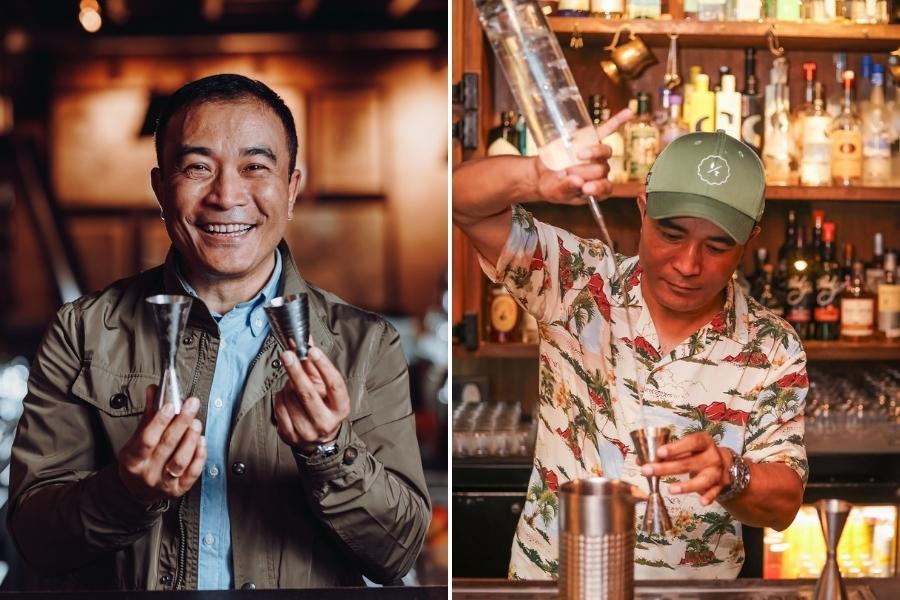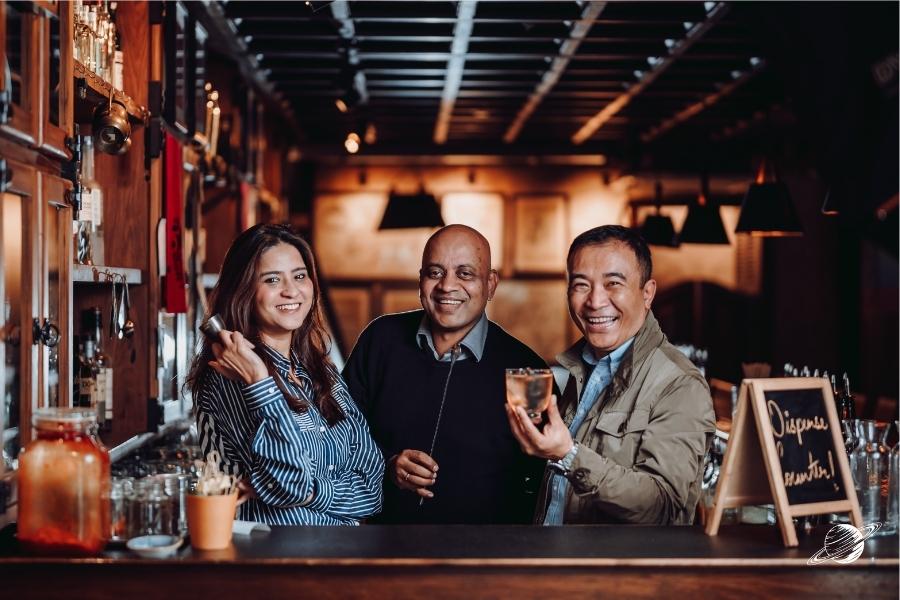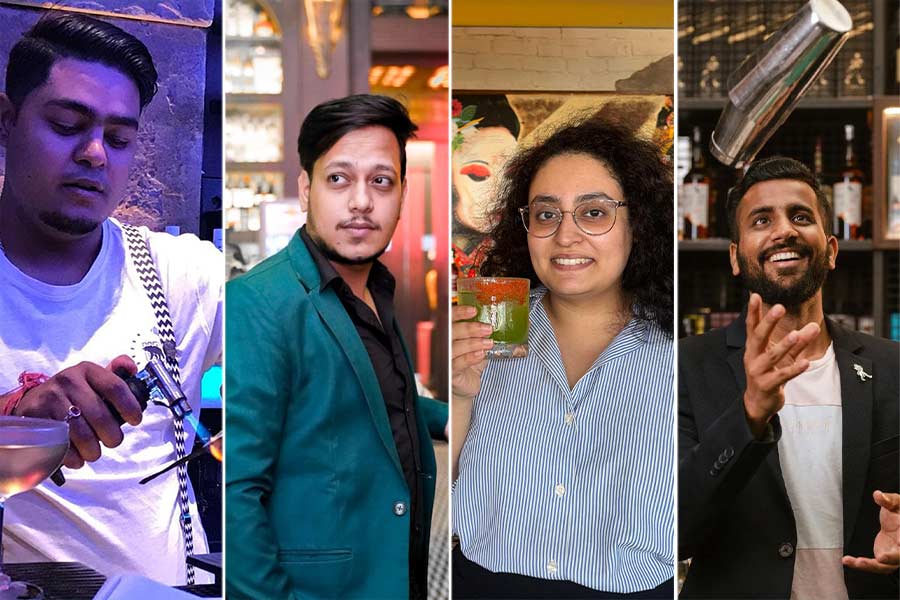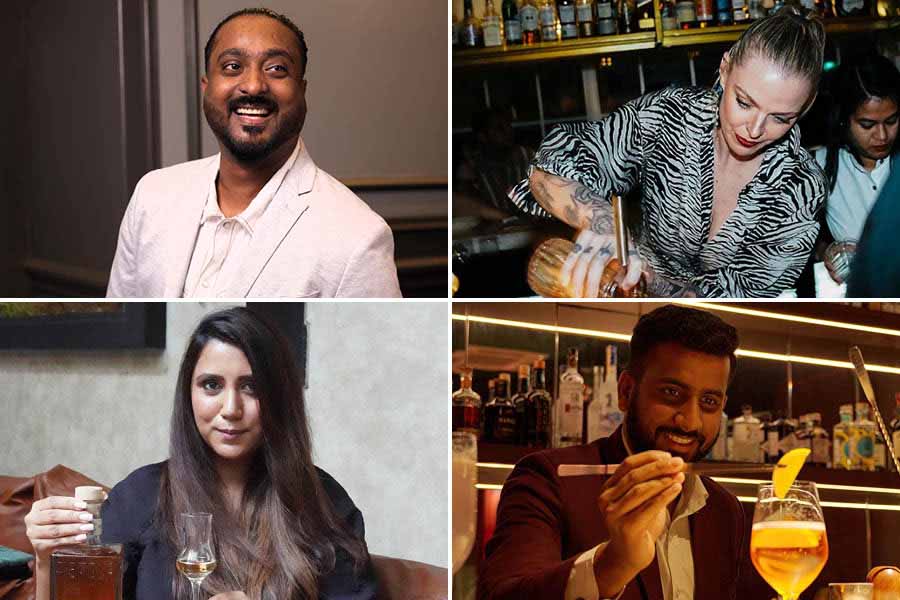The week-long India Bartender Week (IBW), running till February 27 in Delhi NCR, is celebrating India’s bartending talent while fostering global connections. Co-founded by Minakshi Singh, Vikram Achanta, and Yangdup Lama, the event aims to elevate India’s cocktail culture through workshops, panel discussions, and networking opportunities. The week includes ‘Beverage Week’ (till Feb 25) with bar collaborations across Delhi NCR, followed by the ‘India Bar Summit'’ (on Feb 26 and 27).
Yangdup Lama, co-owner of acclaimed bars like Sidecar (ranked #18 in Asia’s 50 Best Bars 2023), Cocktails & Dreams Speakeasy (a “bartenders’ bar” specialising in custom cocktails), and The Brook, has been instrumental in shaping India’s bar scene. Recognised among the Bar World 100 list of the industry’s most influential figures, Lama brings decades of experience in mixology and bar innovation. His bars are known for blending storytelling with cocktails, offering a drinking experience rooted in local flavors and craftsmanship. With almost 30 years of experience, the man still aims to better the bartending industry’s scene while staying true to the art.
In a chat with My Kolkata, Lama discussed IBW’s vision and how his award-winning bars continue to push boundaries with inventive menus and immersive hospitality.
My Kolkata: IBW is India’s first large-scale bartending festival. What inspired you to co-found it, and how has it influenced India’s bar scene?
Yangdup Lama: My co-founders and I share 70 years of combined experience and recognised the need for a platform to engage, interact, and advance the craft. While India’s F&B industry is growing rapidly, true progress comes from hands-on learning and exposure — something no theory can replace. IBW was created to fill that gap.
Back in your time, how did people decide to become bartenders?
When I started, the role of a bartender didn’t formally exist — it only emerged about 20 years ago. I worked in a hotel as a server and then as a supervisor, but I never held the title of bartender, even though I was always behind the bar making drinks. Even as bars and restaurants expanded beyond hotels, roles like bar managers, servers, and chefs were recognised, but not bartenders. Today, however, the craft has evolved, and the profession is well-defined.
What is the ‘Handshake Grant’ at IBW and how do you see it shaping the next generation of Indian bartenders?
India is vast, and many bartenders come from Tier 1, 2, and 3 cities with limited exposure. When I first joined the industry, I did not know hotels or the F&B sector. In contrast, bartenders in the West often have greater confidence due to better exposure, even if Indian bartenders are more skilled.
The Handshake Grant was created to bridge this gap. We select 100 bartenders from India and bring them to Delhi for the Bar Summit. Over two days, they gain insights from industry leaders, sparking passion, excitement, and professional growth in the field.
Which part of IBW excites you the most?
For me, the most exciting part is definitely the two-day summit (Feb 26-27, 2025). While takeovers and the Beverage Week cater mainly to consumers, the summit is designed for industry professionals. What makes it special is the diverse lineup of speakers — both global experts and Indian talent, including chefs and innovators with forward-thinking ideas. Even as a senior in the industry, I’m eager to hear fresh perspectives and see how the industry is evolving. That’s what excites me the most.
The Brook, which opened in Gurugram in 2024, is inspired by the Himalayas and Lord Tennyson’s poem. How did you translate this vision into a cocktail bar experience?
It was a natural fit for me — I’m from Darjeeling and a mountain person at heart. The Himalayan culture, its ingredients, and my tribal background, where alcohol is integral, made this concept effortless to bring to life.
Even before The Brook, I worked on mountain-inspired projects, like mentoring Hapusa, India’s first Himalayan gin, and crafting drinks for Royal Enfield’s The Great Himalayan Exploration. So when we decided to open a new bar, we knew it had to reflect the mountains.
The name came from rediscovering Tennyson’s The Brook, a poem I’d read in my youth. It perfectly captured our vision — bringing the flavours, culture, and spirit of the Himalayas into a glass. From mountain herbs and botanicals to the laid-back evening culture of the hills, everything naturally came together to create this cosy neighbourhood bar in the heart of Gurugram.

When I first tasted sea buckthorn, it immediately reminded me of ber (jujube) from Bengal. That connection led to infusing it with gin, creating a subtle yet unique flavour
The Brook’s menu has Himalayan ingredients like Himalayan apple cider vinegar, maple, and sea buckthorn. How do you balance innovation with accessibility when introducing new flavours?
India’s diversity is a gift—there’s always something new to explore, from mountains to coastlines, offering endless inspiration for ingredients. We have a vast cultural and botanical landscape to draw from.
Balancing flavours is like cooking. It’s about instinct… understanding how an ingredient works and how it can be applied in a cocktail. For example, when I first tasted sea buckthorn, it immediately reminded me of ber (kul or jujube) from Bengal. That connection led to infusing it with gin, creating a subtle yet unique flavour.
Some drinks come together instantly, while others need adjustments. Ultimately, it’s about trusting your palate and letting the ingredients guide the creation.
There are also dishes like khaaja and shyaphaley. Do you see more Indian bars embracing regional food pairings?
Absolutely! Regional flavours are becoming a major focus in Indian bars. The bar in Delhi, Lair, that recently took India’s No.1 spot also won Best Menu for highlighting flavours from the four regions — east, west, north and south — of India. This shift towards local ingredients and cultural storytelling is happening worldwide, not just in India.
For me, telling the Himalayan story feels effortless because I grew up in the mountains. But if I had to craft a Kerala-inspired drink, I’d need extensive research and visits to truly capture its essence. That’s why originality in flavours and storytelling is key.
More Indian bars are embracing this, like Bombay Daak in Mumbai, which showcases India’s diverse chaknas alongside cocktails. It’s an exciting time where regional ingredients, cultural narratives, and creative pairings are shaping the future of the bar scene.
Sidecar is consistently ranked among the world’s best bars. What sets it apart on the global stage?
First, a bar must look and feel exceptional. At Sidecar, we put great thought into the interiors. We don’t rely solely on designers; we sketch and conceptualise elements ourselves to ensure each bar feels like a true neighbourhood space. Even in our upcoming Kathmandu bar, we’re incorporating the essence of 1990s Kathmandu to reflect its culture and depth.
Second, hospitality is key. At Sidecar, the goal is for guests to feel instantly welcome, with a warm and inviting vibe.
Finally, the drink experience, music, and overall atmosphere tie it all together. Our music selection is unique — you won’t find the same playlist in any other bar.
What kind of playlist are you referring to?
Each bar has its own distinct sound. At Sidecar and Speakeasy, we focus on blues and classic tracks. At The Brook, which gets plenty of natural light and daytime guests, we lean into retro hits and singalongs from the ’90s, blended with some country music for a nostalgic touch.
I have made playlists on Spotify under my name. Music is a key part of the bar experience, so we make sure our staff understands its importance. We even hold sessions on the history of blues and jazz, with our head bartender giving presentations on how these genres evolved and why they fit our bars so well.
Similarly, how do you focus on the drinks?
Drink programming is absolutely crucial. Every menu we create tells a story. We’ve just launched Sidecar Going Places, our fifth menu in six years, celebrating Sidecar’s journey. Each menu has had a unique connection and we ensure that every drink has a purpose. Whether it’s the choice of spirits, the balance of flavours, or the visual appeal — there’s something for everyone. But beyond just drinks, we see the entire experience as our product. The comfort of your chair, the lighting, the hospitality, even the warmth of a smile — all of these elements matter. Unlike other industries where processes define the product, ours is human-driven. Every single day is different, and that’s what makes it both challenging and rewarding.
With the rise of low-ABV and non-alcoholic drinks, have your three properties adapted their menus to reflect this trend as well?
Absolutely, it’s a significant movement. At Speakeasy, the culture is very customised; guests rarely look at a menu and instead ask for something tailored to their taste, a tradition that has been going strong for 12 years. However, at Sidecar and The Brook, we’ve introduced dedicated low-ABV and zero-proof cocktail menus. For instance, when I visit The Brook during the day, I often order Bhogate—a Nepali name for pomelo. It’s a refreshing non-alcoholic drink made with fresh pomelo juice, a hint of chilli, and a touch of sugar, and balanced like a proper lemonade. We take our zero-proof cocktails seriously, following the same creative and technical approach that we use for alcoholic drinks.



